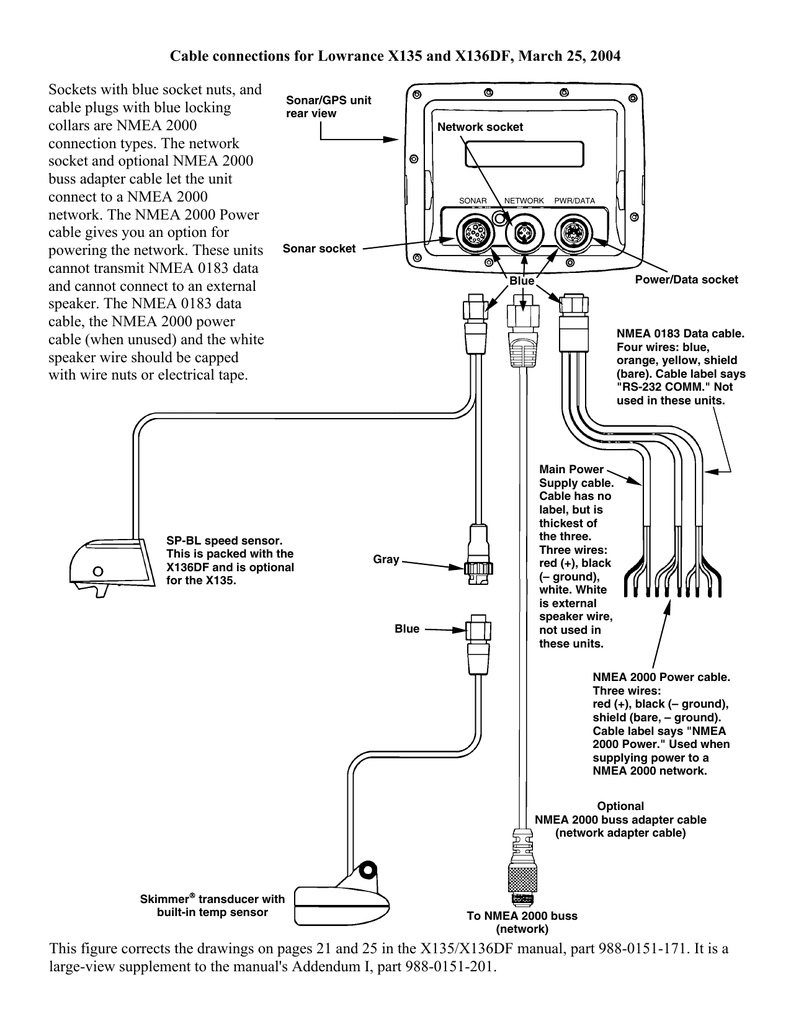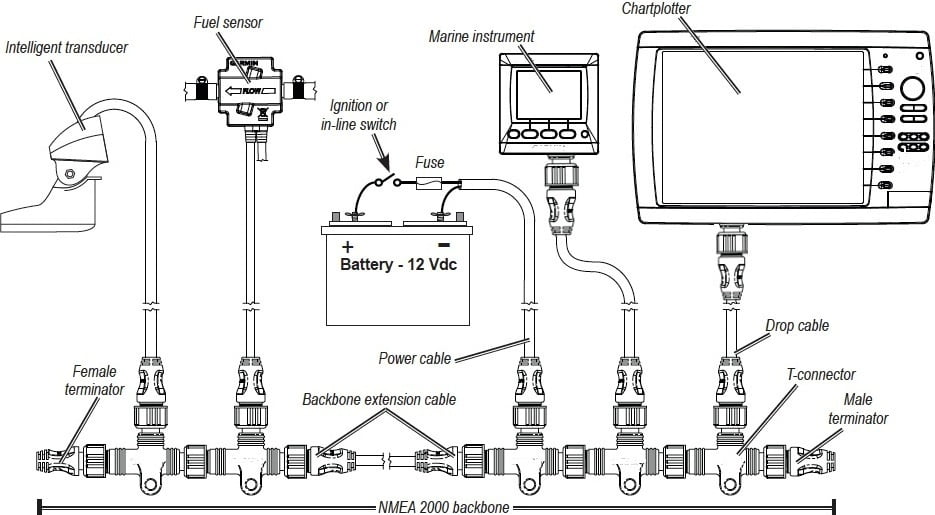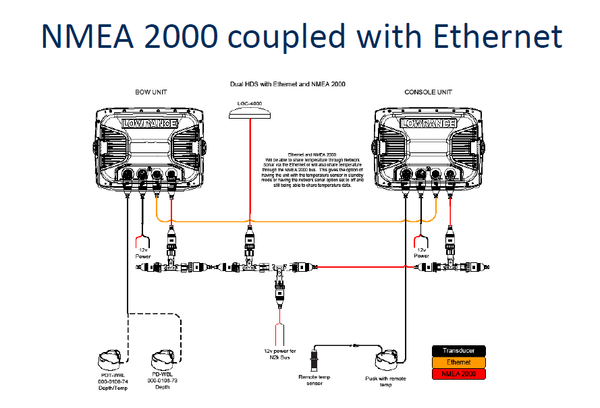

Higher Total Cost Of Ownership due to longer more expensive cable runs, cable running labor, network configuration labour Plug & Play technology, one bus Cable, standardized connectors Of connectors depending on Device Manufacturer More complex to set-up, one-to-one cabling necessary, different types Very fast (250kbps / 50 x times faster than NMEA 0183) On larger vessels using NMEA 2000 cabling can save as much as 150kg weight and 3 weeks cable running labor, due to the central backbone topology.Ĭonnects only Navigation and Communication DevicesĬonnects NavCom, as well as engine data and Tank Level Sensor Devices This is an older standard, but is still widely used, especially on commercial IMO SOLAS vessels.Īs is immediately obvious from above diagrams, NMEA 0183 uses significantly more cabling to connect all devices. Older Marine Electronic Devices commonly have NMEA 0183 interfaces. Mid-Feed=2 backbone segments totally 100m

Maximum Voltage Drop per Backbone recommended for higher backbone lengths and/or high LEN


Maximum Number of NMEA 2000 Devices per NetworkĮquivalent Network Load for all devices (LEN) per Backbone Segment In addition, NMEA 2000 networks should be designed adhering to below rules. All the required NMEA 2000 network parts can be supplied by Actisense via Lambda Marine.īackbone maximum cable length (terminator-to-terminator) Additional cable lengths can be used between any of the connectors to extend the length of the network, whilst ensuring that the NMEA 2000 rules for cable lengths are adhered to, see below “Table 1 - NMEA 2000 Cable Length Rules”. T-Pieces are needed to connect each device to the network.


 0 kommentar(er)
0 kommentar(er)
